Val Kilmer always approached his work on his own terms, often clashing with expectations as he pursued roles that intrigued him. Just as easily as he stepped into the spotlight, he often stepped away, dedicating much of his later career to personal projects. Yet nothing shaped his final decade more than the health crisis that upended his life and career.
Diagnosed with throat cancer, Kilmer faced a grueling period of surgeries and treatments that ultimately robbed him of his ability to speak clearly. He had ignored the early warning signs, and by the time he sought medical help, his condition demanded urgent intervention. The effects of his diagnosis lingered long after the procedures ended, altering both his career and his sense of self.
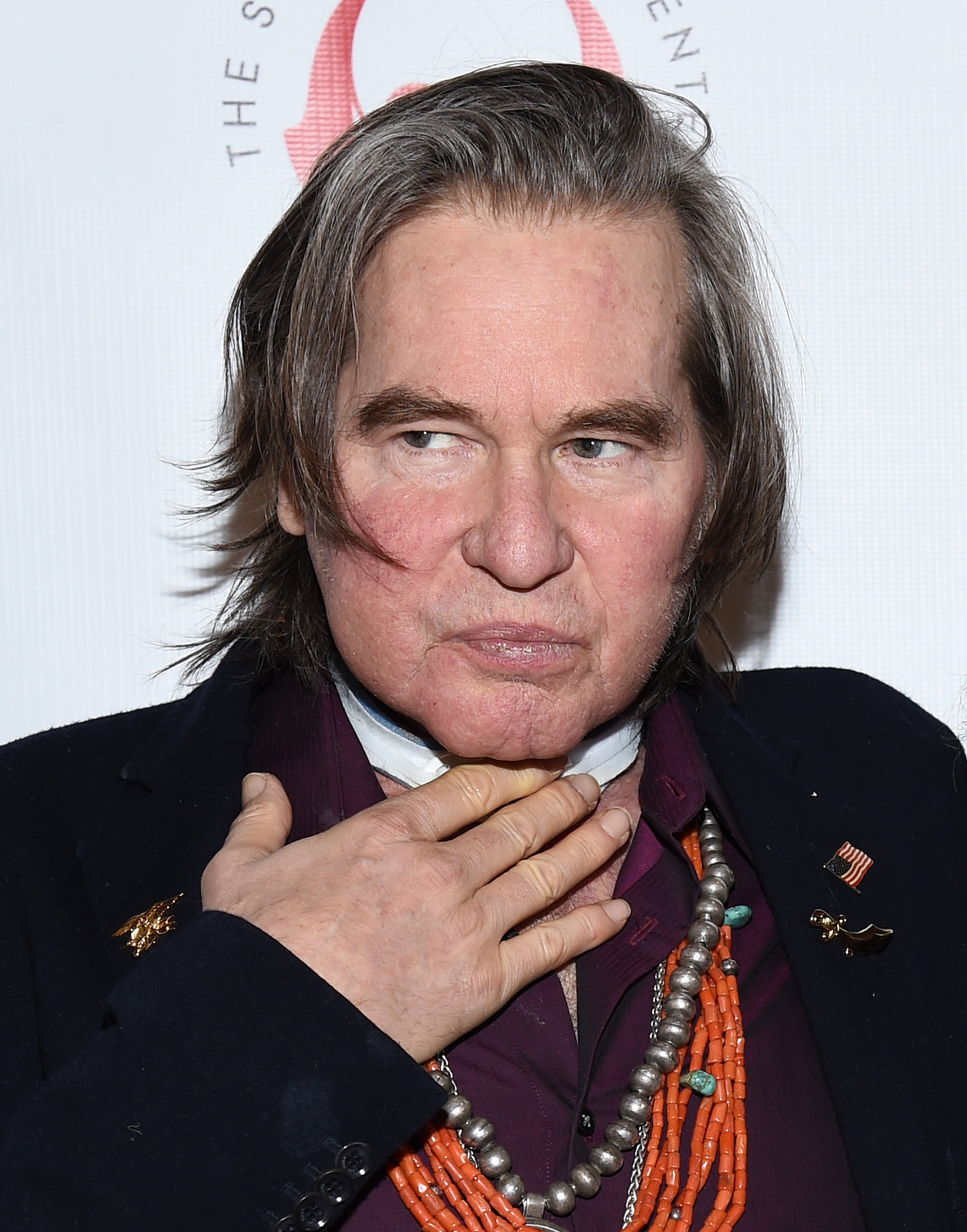
Val Kilmer at the Simply Shakespeare’s Live Read of “The Merchant Of Venice” at Walt Disney Concert Hall on October 28, 2019, in Los Angeles, California. | Source: Getty Images
He underwent a long, complicated recovery that forced him to adapt in ways he never had before. Treatment left him with a tracheostomy, a weakened voice, and limited mobility. During that time, he found himself drawn to a kind of creative work that had nothing to do with scripts or sets. Years later, he explained why he believed it was the one thing that helped him truly heal.
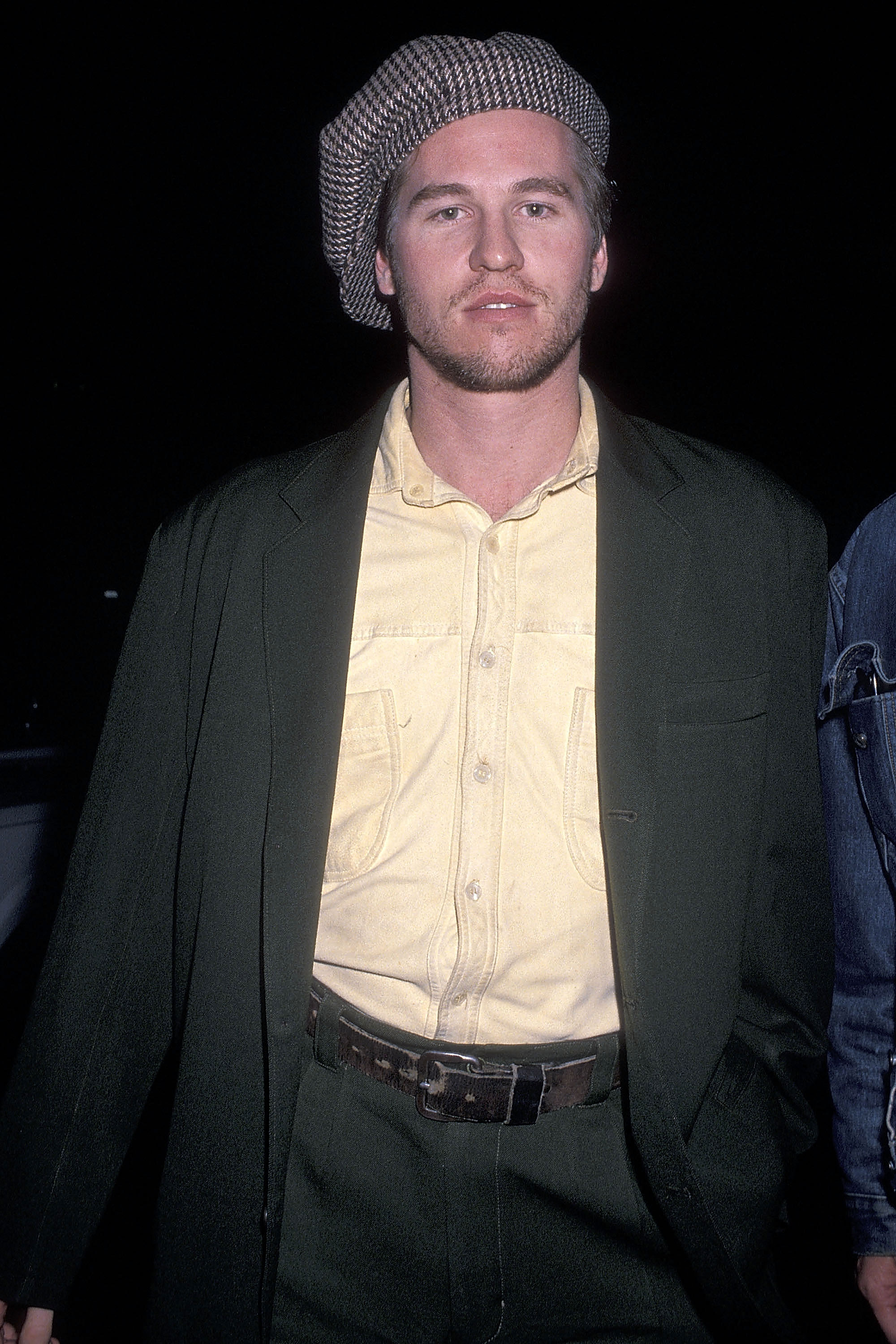
Val Kilmer at the “Hurlyburly” opening night party on November 16, 1988, at the Twenty/20 Club in Century City, California. | Source: Getty Images
But even at a distance, his earlier work kept him visible — whether as Jim Morrison, Doc Holliday, or the Batman who came between Keaton and Clooney. His path had started decades earlier in Los Angeles, where he was born in 1959.
By seventeen, he’d been accepted into Juilliard’s drama program — one of its youngest students ever — and built his foundation on stage. Film came next: first with a Cold War spoof, then with a scene-stealing turn as Iceman in “Top Gun.” His breakout came in “The Doors,” where he didn’t just play Morrison — he sang all the music, too.
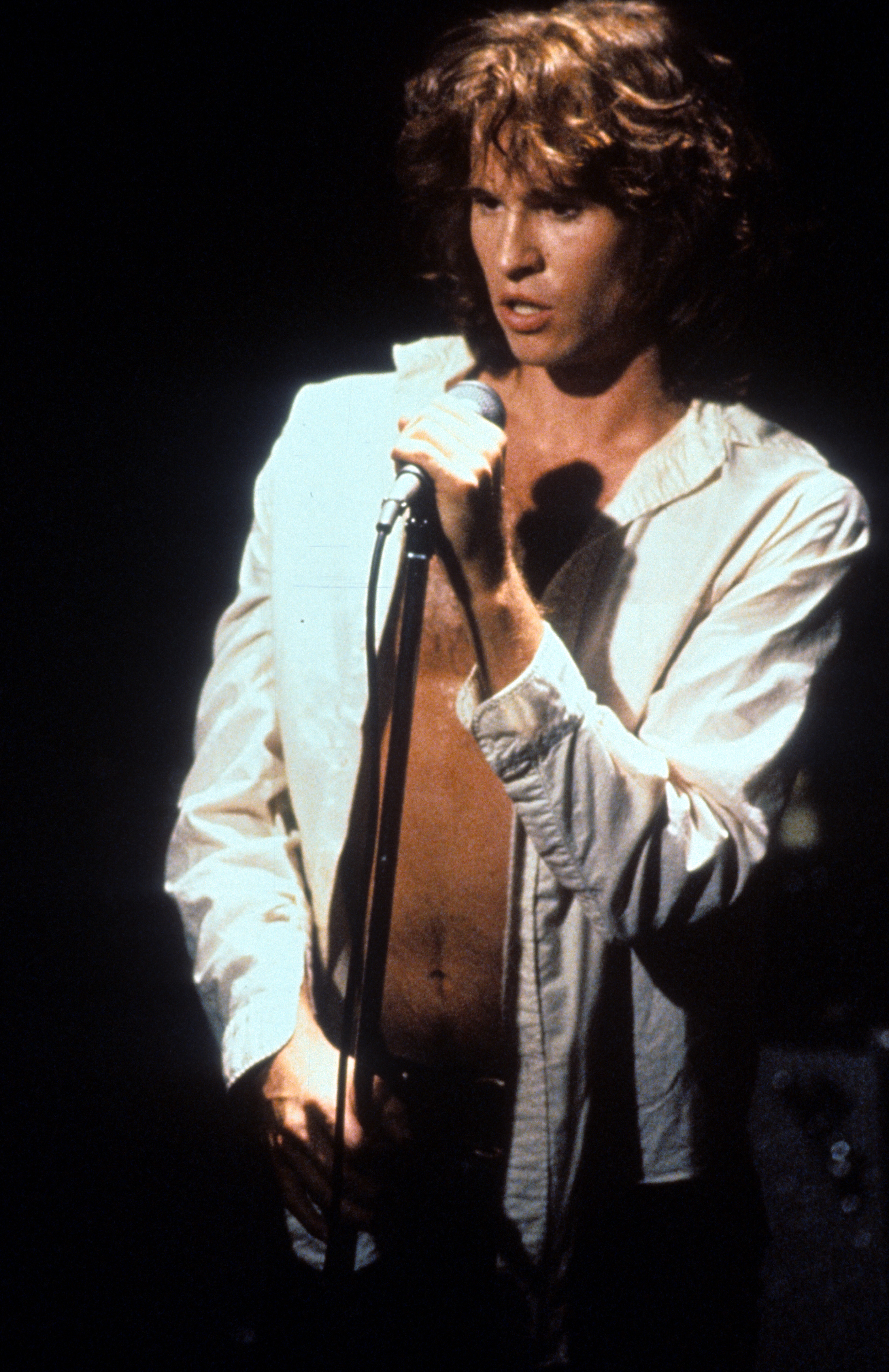
Val Kilmer filming “The Doors” in 1991. | Source: Getty Images
Through the 1990s, he played a series of high-profile roles: Doc Holliday in “Tombstone,” Elvis Presley in “True Romance,” Batman in “Batman Forever,” and a skilled thief in “Heat.” He worked alongside major names like Michael Douglas, Al Pacino, and Robert De Niro, and continued to move between leading and ensemble roles with ease.
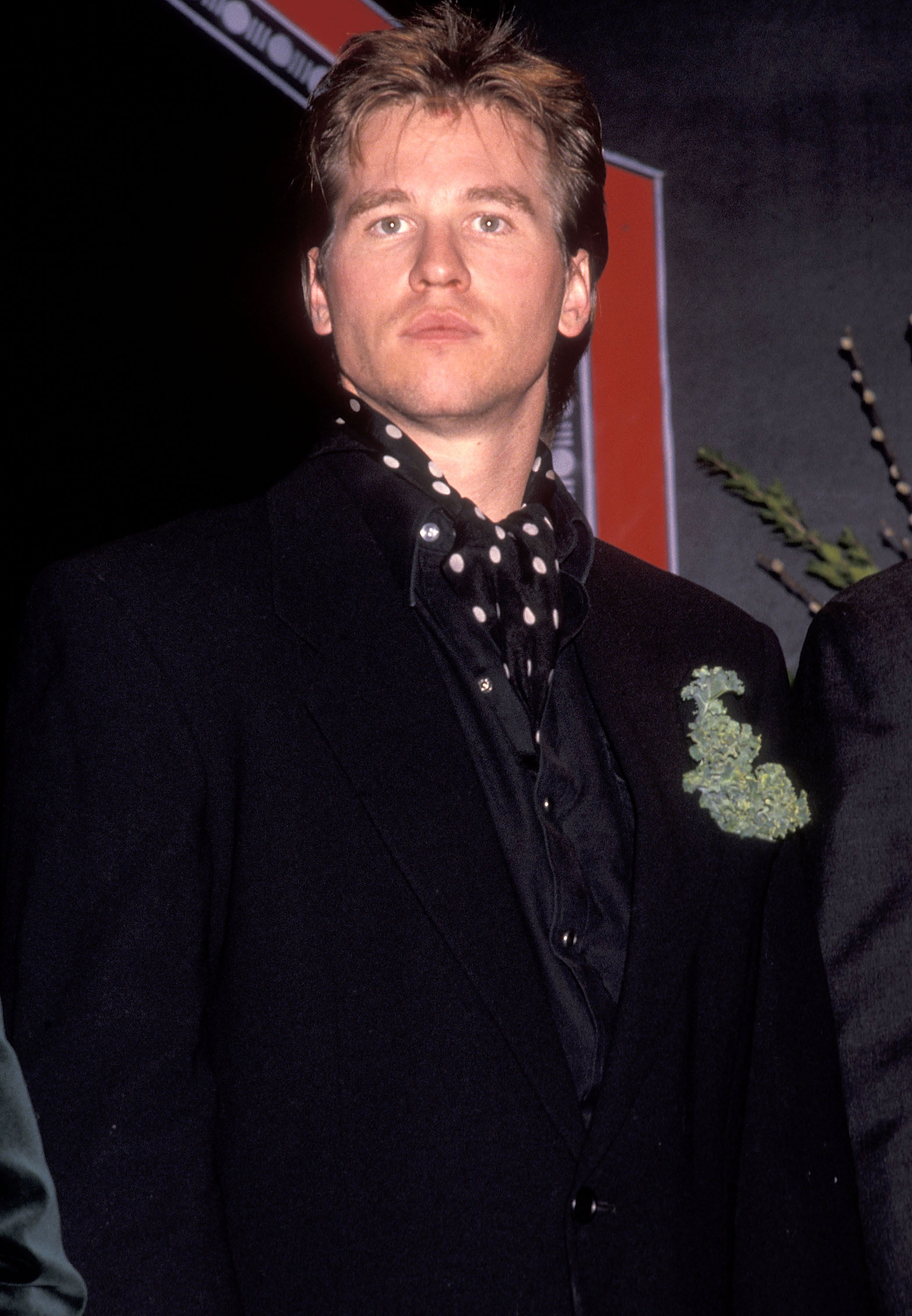
Val Kilmer at the “Twelfth Night on Twelfth Night” opening night play performance on January 6, 1991, at the Balcony Theatre in Pasadena, California. | Source: Getty Images
But behind the scenes, Kilmer developed a reputation for being difficult to work with. Colleagues described him as eccentric and intense, and several directors spoke openly about creative clashes. Still, many also praised his talent. Oliver Stone once said, “Most actors recognize there’s something different in Val than meets the eye.”
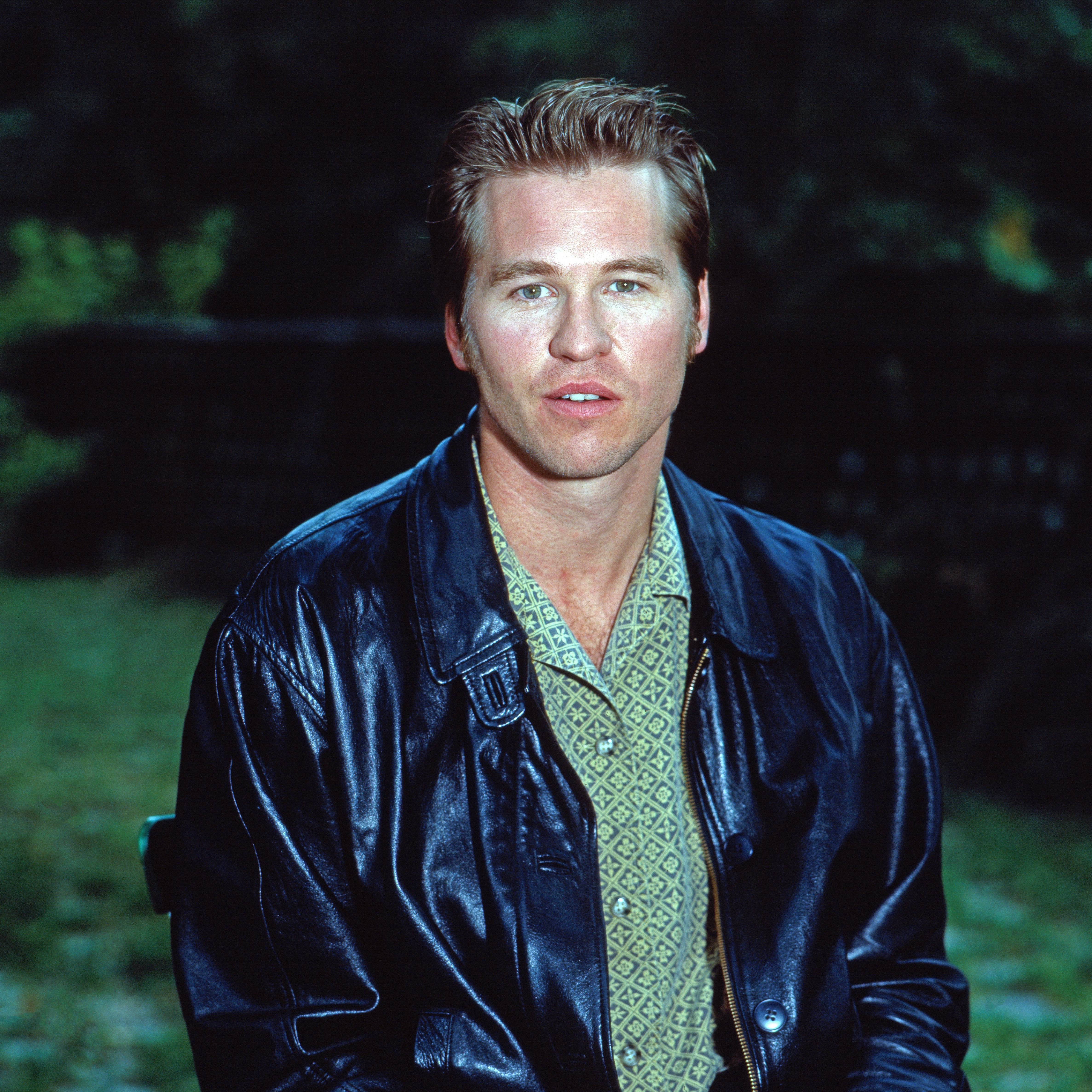
Val Kilmer during an interview in Munich in 1992 | Source: Getty Images
His career wasn’t predictable, but it was never shallow. As time went on, he began shifting focus — less on being a star, more on exploring the kind of work that didn’t need permission. And just as he settled into that rhythm, something unexpected interrupted it.
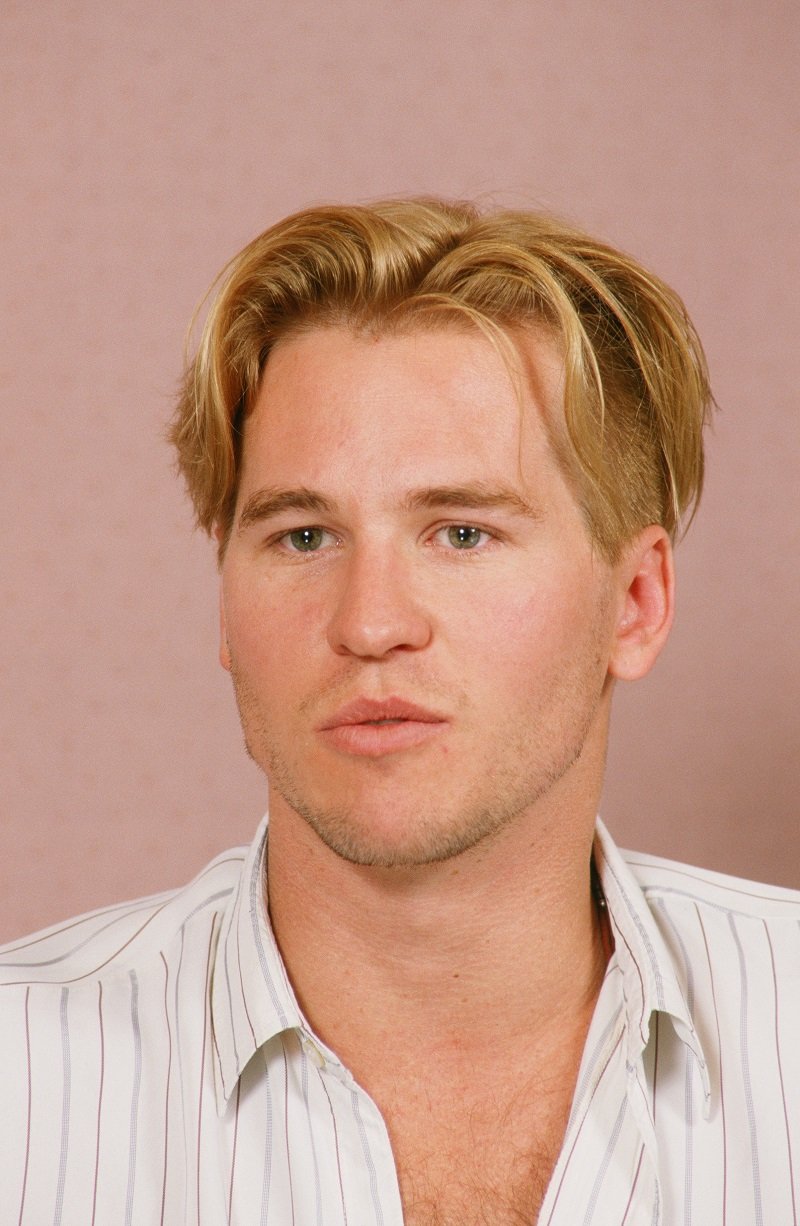
Val Kilmer in 1988 in Los Angeles, California | Source: Getty Images
The First Signs of Trouble and a Shocking Diagnosis
In 2014, while touring his one-man stage production “Citizen Twain,” Kilmer developed a noticeable lump in his throat. Around the same time, swallowing became difficult, and his voice began to deteriorate. Despite these symptoms, he continued with the tour until he could no longer speak clearly and was forced to cancel his scheduled shows.
“I prayed immediately,” he wrote. “Then called 911.” He was hospitalized soon after. In 2015, doctors confirmed that the lump in his throat was cancerous. His appearance during this time had altered significantly, and word started getting out to the public that he had cancer.
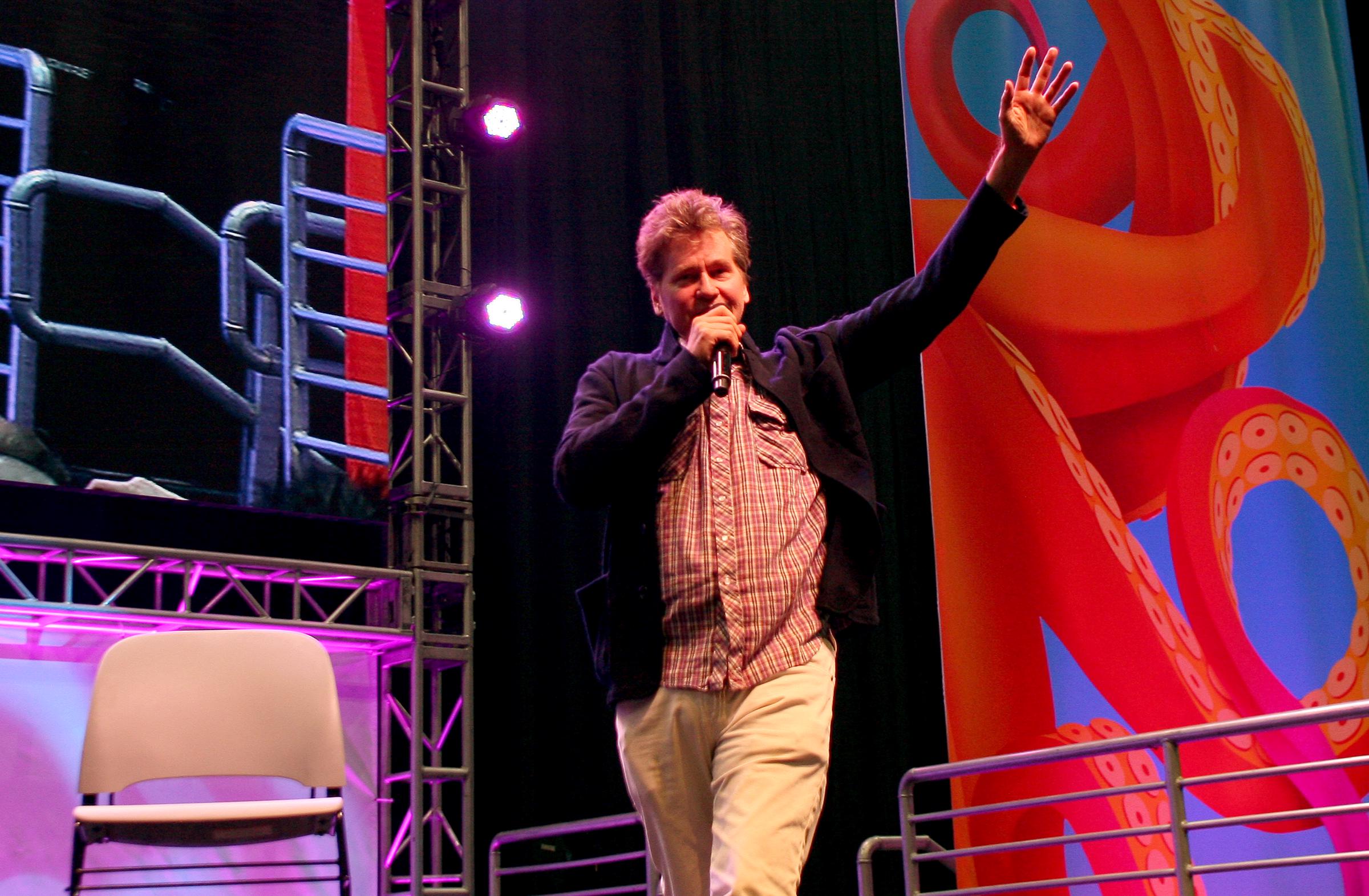
Val Kilmer attends Los Angeles Comic Con at the Los Angeles Convention Center on October 26, 2018 | Source: Getty Images
In 2016, actor Michael Douglas — who had recovered from his own battle with cancer — spoke about Kilmer’s condition during a press junket. Following the words of his “The Ghost and the Darkness” co-star, Kilmer responded on Facebook, “I have no cancer whatsoever.”
The contradiction caused confusion, but Kilmer later explained that he was speaking through the lens of Christian Science, which teaches that illness is a “suggestion” and not a fixed condition.
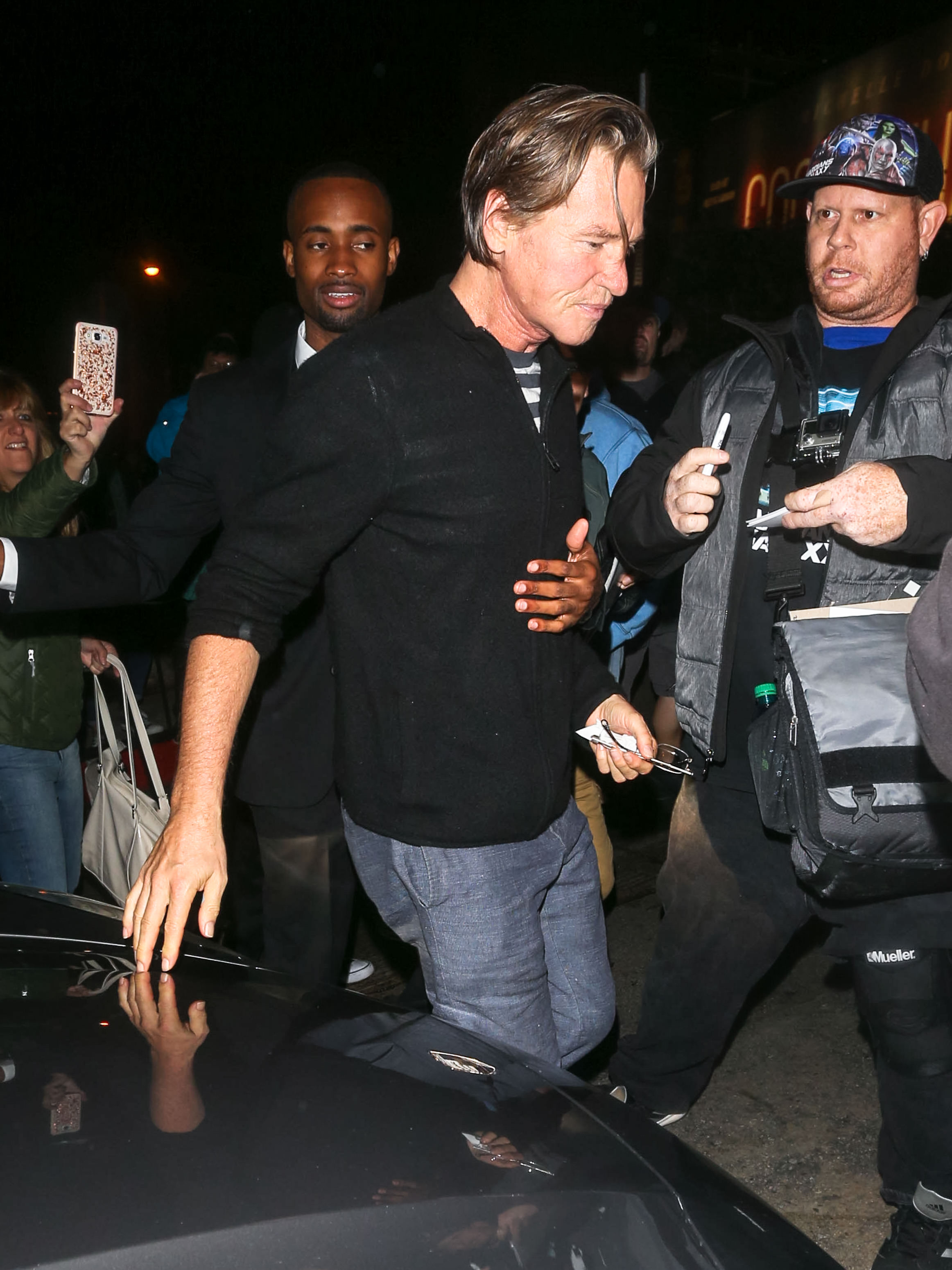
Val Kilmer attends the W Magazine Party at Chateau Marmont in Los Angeles on January 5, 2017 | Source: Getty Images
“They said I was denying that I had cancer, and when they asked me, I didn’t have cancer. It was a bit like, ‘Do you have a broken leg?’ And if you broke it in high school, you would say no,” he explained. Even so, the damage left behind by the treatments couldn’t be explained away, and would shape the rest of his life.
By the time he was diagnosed, the cancer had progressed far enough to require immediate intervention. His treatment began shortly after, and it included surgery, chemotherapy, and radiation — all of which left lasting damage to his throat and voice.
The procedures, he later said, “zapped my whole throat, and it’s still dry as a bone.” He also underwent a tracheostomy, which altered his voice permanently. It became strained and raspy, often difficult to understand. He also required a feeding tube because he could no longer eat or swallow easily due to the damage.
Over time, he lost weight, and his physical appearance changed. He was often seen with scarves around his neck and a noticeable tilt to his posture. The effects were visible, but they also reached deeper. Kilmer had built a career on vocal presence and expression, and now both were limited.
In interviews and public appearances, he was often accompanied by someone who could help interpret or clarify his speech. These limitations kept him away from many traditional acting roles and public events. Still, he didn’t retreat. Instead, he began redirecting his energy into forms of work that didn’t require speech.
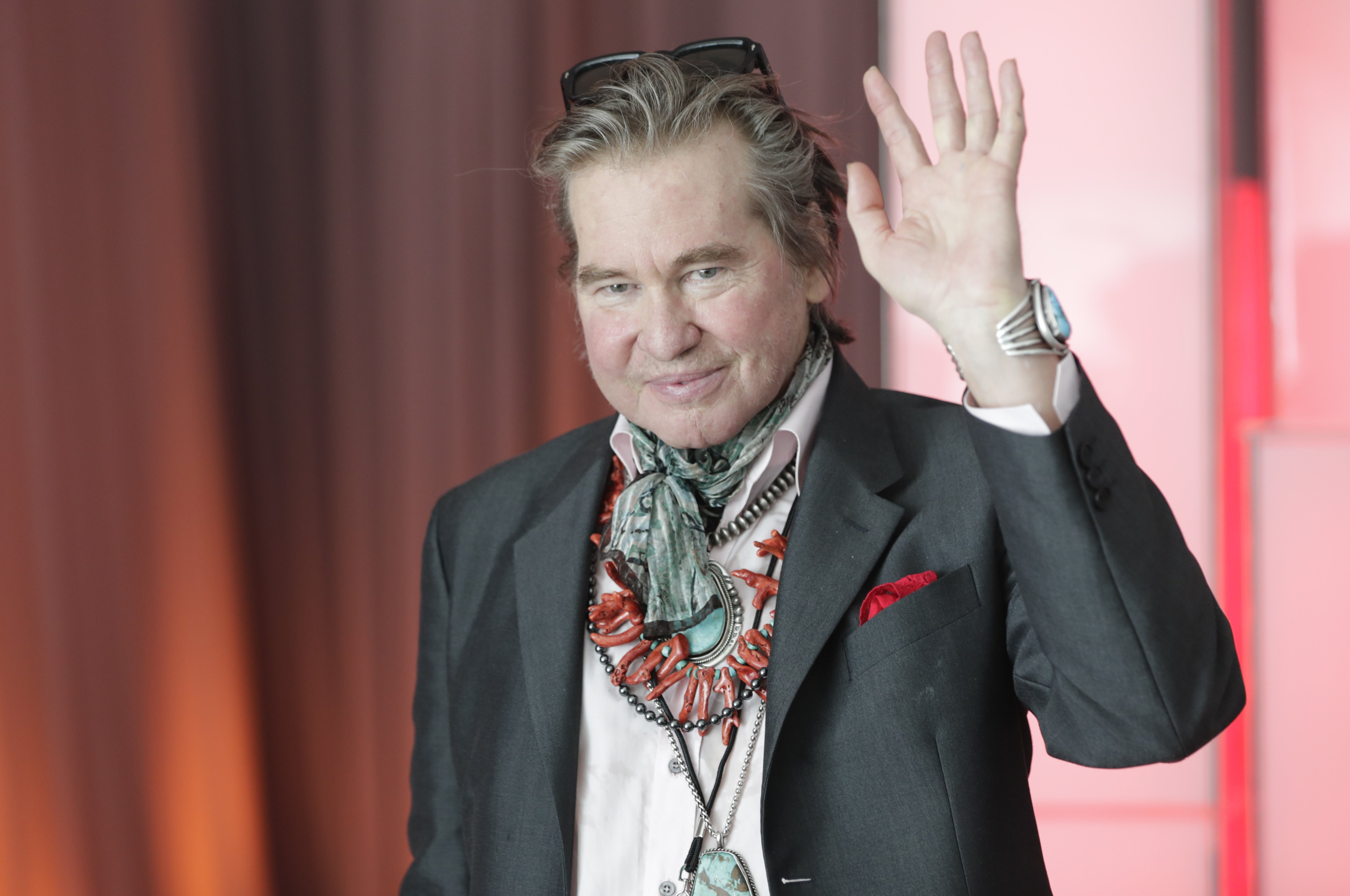
Val Kilmer at the United Nations headquarters on July 20, 2019 | Source: Getty Images
Where His Voice Ended, Something Else Began
With traditional acting roles now out of reach, Kilmer returned to creativity in its purest form. He began painting, writing, filming, and photographing — working across mediums not for an audience, but because the need to express himself hadn’t gone away.
“With little voice, my creative juices were boiling over and pouring out of me,” he later wrote. He also began filming, capturing moments and ideas that reflected his life after treatment. That creative outpouring eventually led to something larger: Kamp Kilmer.
He initially found a large studio space in Hollywood, hoping it could serve as a gathering point for artists, musicians, and collaborators. When the COVID-19 pandemic interrupted his plans, he adapted again, moving the project online. “You can’t snuff out destiny,” he said.
Kilmer described Kamp Kilmer as a “living, breathing virtual space with boundless possibilities” — a digital platform where artists could connect and work across disciplines. He credited the experience not only with creative fulfillment, but with something far more personal. “I felt the art healing me,” he wrote.
It was during this same period that Kilmer began digging into his archives, coming up with material that would soon become the foundation for a new kind of project.
Telling His Story in ‘Val’
As Kilmer continued creating, he also began assembling decades of personal footage, journals, and behind-the-scenes material from his film career. The result was the 2021 documentary ‘Val,’ produced with the help of his children, Jack and Mercedes Kilmer.

Mercedes Kilmer and Jack Kilmer attend the Premiere of Amazon Studios’ “VAL” at DGA Theater Complex on August 03, 2021 in Los Angeles, California. | Source: Getty Images
Much of the narration was spoken by his son, reading his father’s words aloud to compensate for Kilmer’s limited speech. The documentary offered a detailed look at Kilmer’s life — from his early roles and on-set experiences to his health struggles and recovery.
It included never-before-seen video diaries, stage rehearsals, family moments, and reflections on fame and loss. He addressed the impact of his cancer openly and appeared on screen with his tracheostomy visible, offering an unfiltered view of how treatment had changed him.
“Now that it’s more difficult to speak, I want to tell my story more than ever,” Kilmer said in the film. “Val” premiered at the Cannes Film Festival and received a standing ovation. It later won multiple awards, including a Critics’ Choice Award for best historical or biographical documentary.
The film marked one of his final major projects — and it showed that, even without a clear voice, Kilmer was determined to be heard.
His Final Years and Last Appearance
In the years after “Val,” Kilmer made only a few public appearances, but continued to take part in projects when possible. He briefly returned to one of his most iconic roles — appearing as Tom “Iceman” Kazansky in “Top Gun: Maverick” (2022).
The scene was written around his condition, allowing him to appear opposite Tom Cruise in a moment that acknowledged both his legacy and his real-life health struggles. Kilmer remained based near Santa Fe, where he had lived for years, and stayed closely connected to his children.
Though his voice remained limited, he occasionally posted online and continued developing ideas through Kamp Kilmer. In March 2025, Kilmer was scheduled to attend the Beverly Hills Film Festival for the West Coast premiere of American Badass: A Michael Madsen Retrospective.
It was meant to be a rare red carpet appearance—one that had just been confirmed days earlier. But on April 1, 2025, news broke that Kilmer had died in Los Angeles at the age of 65. His daughter confirmed the cause of death as pneumonia.

Val and Mercedes Kilmer at the 2019 Annual Thespians Go Hollywood Gala on November 18, 2019 | Source: Getty Images
She also shared that although he had recovered from throat cancer. As news of his passing spread, tributes poured in — not only for his work, but for the way he spent his final years redefining what it meant to survive.
Online, reactions to his story and the space he created through Kamp Kilmer were filled with admiration and respect. “Absolutely amazing story! It’s incredible how he found ways to heal,” one person wrote. Another added, “Love and respect to Val Kilmer.”
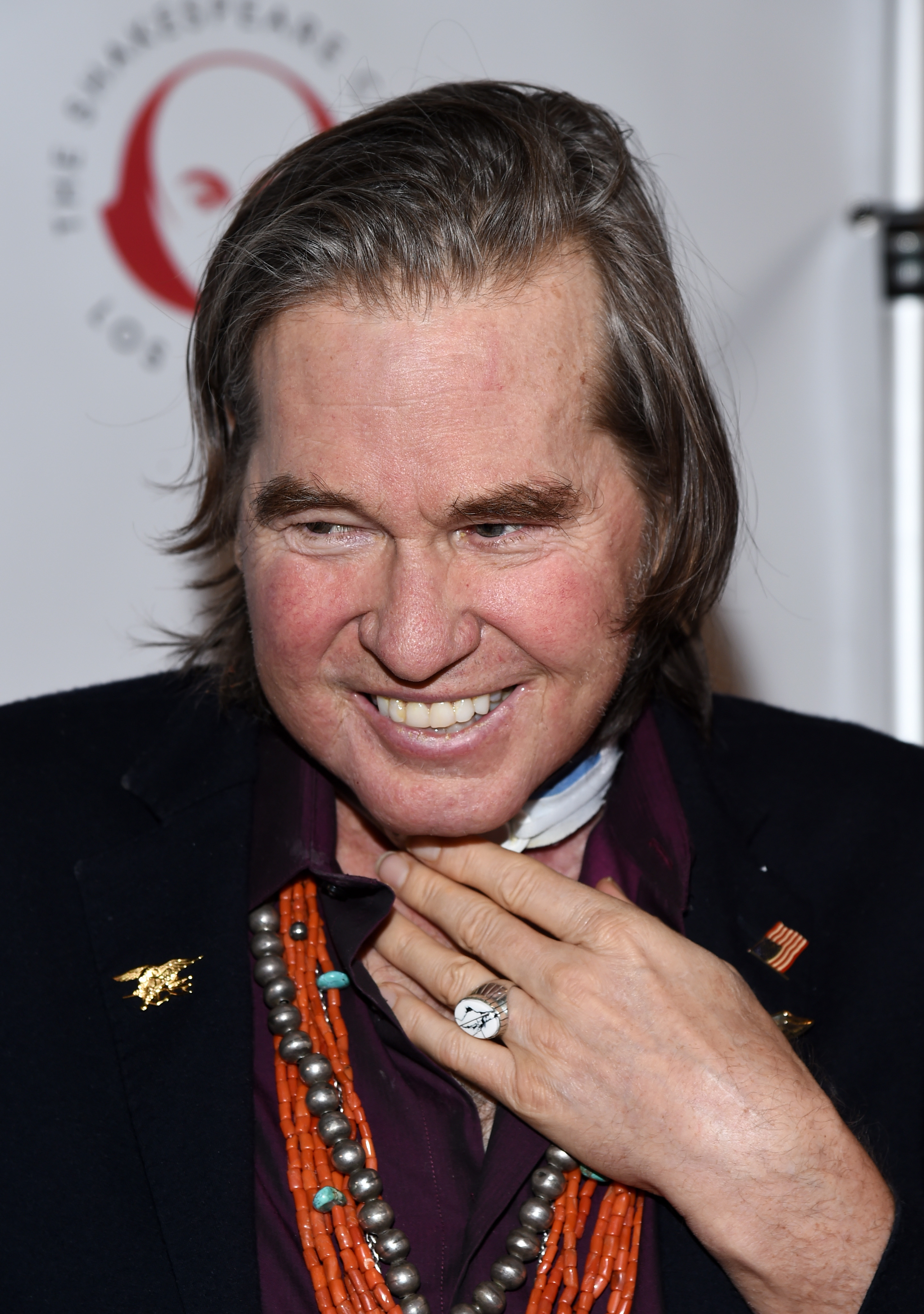
Val Kilmer at Simply Shakespeare’s Live Read of “The Merchant Of Venice” in 2019 | Source: Getty Images
For others, the loss felt heavier. “Will be sadly missed,” one comment read. “This is a pretty sad story,” said another. Kilmer’s journey through illness, silence, and reinvention had resonated deeply. While his voice never fully returned, the work he left behind continued to speak for him.


